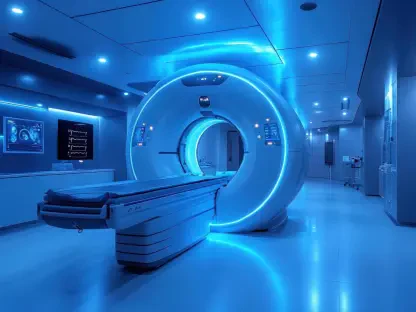In the ever-evolving field of medical technology, few have made as significant an impact as Faisal Zain. With an exceptional background in the manufacturing of medical devices, Faisal’s insights offer a deep dive into the mechanics and challenges of medical innovation. Recently, at the Human Genetics Institute of New Jersey, the storage and management of DNA samples have become a hot topic due to funding challenges. Faisal shares his thoughts on this complex issue, the implications of contract terminations, and the broader state of genetic research.
Can you tell us about your role and responsibilities at the Human Genetics Institute of New Jersey?
At the Human Genetics Institute of New Jersey, my role revolves around overseeing the storage and management of a vast collection of DNA samples. My responsibilities include ensuring the samples are stored under optimal conditions, managing the logistics of cooperation with researchers, and supporting various diagnostic and research-based projects. It’s a balancing act of maintaining scientific integrity while driving innovation in genetic research.
How did you first become involved in storing and managing DNA samples for the NIH?
My involvement began several years ago through a contract with the NIH that aimed to outsource the storage and distribution of research samples. It was a pivotal decision for NIH to delegate this to organizations like ours that have the infrastructure and expertise. We were able to provide a reliable environment and dedicated attention, which allowed the NIH to focus on its research agenda.
Could you elaborate on the significance of the DNA bank you oversee at Rutgers University?
The DNA bank at Rutgers is one of the largest university-based collections in the world, compiling a vital resource for genetic research. It plays a key role in numerous studies by providing the genetic material needed to explore correlations between genetic markers and various disorders. This DNA bank effectively acts as a cornerstone for pivotal research that influences public health policies and understanding of genetic predispositions.
What are some notable projects or studies you have worked on with these DNA samples?
One standout project is the NESARC-III, which examined DNA from saliva samples to explore substance use and mental health conditions. Analyses from this project have been instrumental in mapping genetic links between common psychiatric disorders and substance use patterns, offering new insights into treatment and intervention strategies.
Specifically, what is the NESARC-III project, and what are its goals?
The NESARC-III project is a comprehensive study focused on understanding the genetic foundations of psychiatric and substance use disorders. Its goals include identifying genetic variants that may predispose individuals to these conditions, thereby aiding in the prevention and treatment across populations. The study taps into data from thousands of samples to better understand these complex relationships.
How have the NESARC-III samples contributed to research on psychiatric and substance use disorders?
The samples from NESARC-III have facilitated groundbreaking research that tracks trends in substance abuse and correlates them with mental health conditions. By studying these samples, researchers have been able to draw connections between genetic predispositions and altered risk levels for conditions like PTSD, depression, and addiction, informing both public health policy and clinical approaches.
What was your reaction when you received the news about the termination of your NIH contract?
Receiving news about the early termination was quite unexpected. It primarily raised concerns about the future of not just these samples, but also the valuable insights and potential advancements they represent. My immediate thought was about the implications for ongoing projects and the researchers who rely on this data.
Have you received any further communication or instructions from the NIH regarding the future of the NESARC-III samples?
As of now, there hasn’t been any detailed communication from the NIH regarding what’s next for the NESARC-III samples. This lack of direction adds to the uncertainty and underscores the need for a strategic plan moving forward to safeguard the ongoing research.
What potential impacts could the termination of this contract have on ongoing and future research?
The termination could severely affect research progress, particularly studies that depend on longitudinal data. It might disrupt the flow of valuable genetic insights and stall initiatives aimed at resolving psychiatric disorders, ultimately affecting scientific discoveries and public health outcomes.
Are there any plans or options being considered to preserve the NESARC-III samples elsewhere?
We’re actively exploring potential alternatives, such as partnering with other institutions or seeking private funding to ensure these samples remain secure. Maintaining continuity is crucial, and we’re committed to finding solutions that uphold the integrity of this valuable resource.
How have budget cuts at the NIH affected your work and other similar projects in the field?
Budget cuts have significantly impacted our ability to plan long-term projects. They add layers of complexity to managing resources and force us to rethink sustainability. Such financial constraints often lead to reprioritizing projects, potentially sidelining vital research.
Have you considered taking any measures or actions in response to the contract termination decision?
Yes, we’re looking into all avenues to contest the decision and gain support from the scientific community to emphasize the importance of these samples. It’s critical to advocate for the continuity of projects that hold such promise for public health advancements.
How do you plan to ensure that the data and samples you manage remain accessible to researchers globally?
Ensuring global accessibility means enhancing our digital infrastructure to host data sustainably, as well as establishing partnerships to share resources. By doing so, we aim to keep the doors open for international collaboration and innovation.
In what ways do you believe the scientific community can support efforts to maintain such valuable resources?
The scientific community can rally support through advocacy and raising public awareness about the importance of such genetic collections. Granting agencies must be urged to consider long-term implications and potential hindrance to research advancements when cutting funding.
What are your hopes for the future regarding the preservation and utilization of DNA samples in research?
I hope for a future where there’s strong, consistent support for the preservation of DNA samples, allowing research to flourish uninhibited by financial constraints. It’s vital that we’re able to harness the full potential of genetic data to continue driving discoveries that can transform public health.









